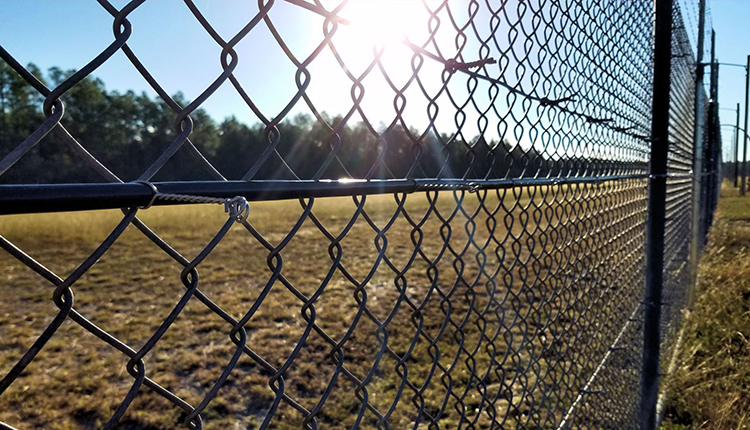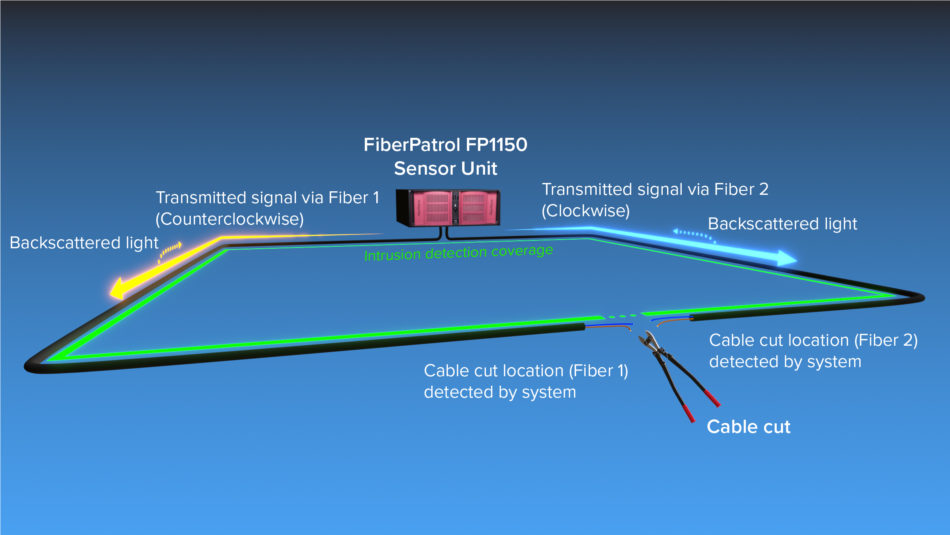How Security Fibers Are Used to Enhance the Effectiveness of Security Surveillance Networks
Why Fiber Optic Safety And Security Solutions Are the Future of Protection
The change to fiber optic safety systems notes a considerable development in the realm of protection, driven by their phenomenal information transmission capacities and durability to external disturbances. As the landscape of security advances along with arising modern technologies such as AI and IoT, the potential for fiber optics to boost and redefine security facilities ends up being progressively apparent.
Advantages of Fiber Optic Solutions
Among the primary benefits of fiber optic systems is their remarkable data transfer ability, which assists in the transmission of huge quantities of information over lengthy ranges without substantial loss. This particular is specifically useful for safety applications that call for the constant tracking and transfer of high-definition video feeds, sensing unit data, and other crucial info. Fiber optics can suit the growing demands of modern protection systems, making certain that information remains undamaged and reliable.
Additionally, fiber optic cable televisions are much less at risk to electro-magnetic interference, which can be a substantial issue in atmospheres with numerous electronic tools. This resistance enhances the stability of the data being transferred, thereby decreasing the risk of data breaches or system failings. Fiber optic systems are naturally more safe and secure than standard copper cable televisions, as tapping into a fiber optic line without detection is exceptionally difficult.
The resilience of fiber optic cables additionally adds to their appeal. They are immune to ecological variables such as wetness and temperature changes, lowering maintenance expenses and enhancing system longevity. On the whole, these benefits placement fiber optic systems as a durable and efficient choice for contemporary protection facilities, guaranteeing trusted and protected information transmission.
Improved Data Transmission Rate

The capacity to send large amounts of information rapidly promotes the smooth integration of high-def video clip feeds and progressed analytics. Safety systems can currently refine and examine info in real-time, boosting response times and situational awareness. In addition, fiber optic connections sustain longer transmission ranges without deterioration of signal quality, making them ideal for extensive security networks.
The increased rate of fiber optic systems not just improves the performance of safety procedures however likewise minimizes latency. This is particularly crucial in essential scenarios where timely decision-making can protect against safety breaches or reduce potential hazards. As companies remain to focus on safety and performance, the demand for fast and trustworthy information transmission will most certainly strengthen fiber optic systems as a keystone of modern-day safety framework.
Resistance to Interference
Fiber optic safety and security systems regularly demonstrate outstanding resistance to electromagnetic interference, a vital advantage in atmospheres prone to electronic noise. Unlike traditional copper cables, which Learn More can be adversely impacted by electromagnetic fields, superhigh frequency interference, and other kinds of electrical disruption, fiber optic cords use light to transmit data. This inherent property makes certain that the signals remain clear and unaltered, despite bordering digital task.
The usage of glass or plastic fibers in fiber optic technology develops an obstacle versus interference, permitting reputable data transmission also in difficult circumstances such as commercial centers, city locations with high electronic web traffic, or areas near radio towers. This particular substantially lowers the possibility of signal destruction or loss, making fiber optic systems specifically appropriate for protection applications where honesty and precision of data are critical.
In addition, this resistance to interference enhances the total performance and reliability of protection systems, making certain that tracking and sharp systems function seamlessly. In a world where protection is progressively threatened by advanced technologies, the durability of fiber optic systems attracts attention as a pivotal feature, strengthening their condition as a crucial element of contemporary security infrastructure.
Cost-Effectiveness In Time
Considerable cost financial savings can be attained gradually with the implementation of fiber optic safety and security systems. While the initial investment might appear greater contrasted to conventional copper-based systems, the long-lasting economic benefits emerge through lowered operational and upkeep expenses (fiber security). Fiber optic cords are inherently click to read more long lasting and less prone to environmental factors, which converts to lower replacement and fixing costs over their life-span
In addition, fiber optic systems need much less power to run, which additionally lowers power expenses. Enhanced information transmission capacities enable less repeaters and amplifiers, minimizing equipment investment and simplifying installment processes. The scalability of these systems also adds to cost-effectiveness, as organizations can increase their safety and security facilities without incurring significant additional expenditures.
One more variable to consider is the boosted performance in surveillance and action abilities that fiber optics supply. Enhanced real-time data transmission can lead to quicker incident reaction times, potentially mitigating losses and responsibilities connected with safety and security violations. Altogether, the long-lasting benefits of fiber optic safety and security systems not just validate the first expenditure but also position them as a financially sensible choice for organizations seeking robust defense remedies.

Future Developments in Protection
Progressing technologies are readied to reinvent security systems, integrating synthetic knowledge (AI) and artificial intelligence to enhance hazard detection and response capabilities. These technologies will allow safety and security systems to evaluate substantial quantities of information in real-time, identifying patterns and anomalies that suggest prospective hazards. This aggressive strategy will enable quicker decision-making and top article a lot more reliable event reactions.
Additionally, the incorporation of the Net of Points (IoT) is paving the way for interconnected security tools, using thorough monitoring and surveillance. Smart sensing units can pass on info regarding environmental changes, while automated alerts can alert safety personnel immediately of dubious tasks.
Additionally, the development of biometric innovations will even more bolster security devices. Facial recognition, fingerprint scanning, and retina recognition are becoming extra advanced, offering layers of verification that are tough to bypass.
Verdict
To conclude, fiber optic security systems stand for a significant development in defense innovation, providing exceptional data transmission speed, resistance to electro-magnetic disturbance, and long-lasting cost-effectiveness. As the need for advanced protection remedies remains to grow, the assimilation of fiber optics with emerging modern technologies such as AI, IoT, and biometrics will further boost security infrastructures (fiber security). The combination of these developments will ensure a much more safe and secure and responsive environment, solidifying fiber optics as a cornerstone of future security systems